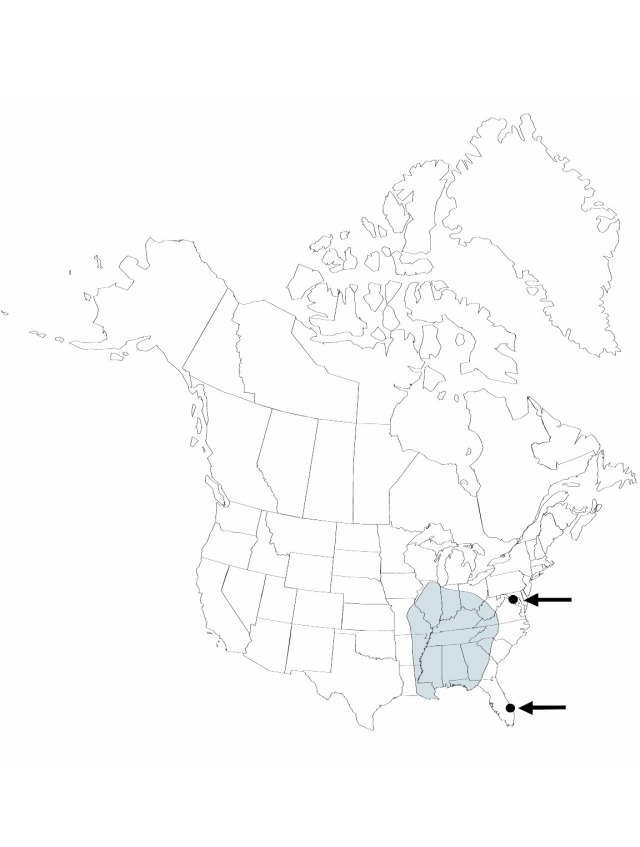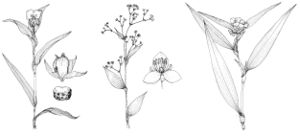Tradescantia subaspera
Bot. Mag. 39: plate 1597. 1814.
Herbs, erect or ascending, rarely rooting at nodes. Stems often flexuous, 30–100 cm; internodes pilose to glabrescent. Leaves spirally arranged, at least proximal ones distinctly petiolate; blade dark green, lanceolate-oblong to lanceolate-elliptic or lanceolate, 6–30 × (0.4–)1–6.5 cm (distal leaf blades wider than sheaths when sheaths opened, flattened), apex acuminate, glabrous to puberulent. Inflorescences terminal, usually also axillary at distal nodes, axillary inflorescences sessile or variously pedunculate; bracts foliaceous. Flowers distinctly pedicillate; pedicels 1–1.7 cm, pilose to glabrous; sepals 4–10 mm, puberulent with glandular, eglandular, or mixture of glandular, eglandular hairs, occasionally glabrous; petals distinct, light to dark blue, rarely white, broadly ovate, not clawed, 10–15 mm; stamens free; filaments bearded. Capsules 4–6 mm. Seeds 2–3 mm. 2n = 12, 24.
Phenology: Flowering spring–fall (May–Sep).
Habitat: Rich woods along streams and on slopes and bluffs, less commonly dry woods, roadsides, fields, or along railroads
Distribution

Ala., Ark., D.C., Fla., Ga., Ill., Ind., Ky., La., Miss., Mo., N.C., Ohio., S.C., Tenn., Va., W.Va.
Discussion
Two varieties are recognized by E. Anderson and R. E. Woodson Jr. (1935): Tradescantia subaspera var. subaspera, with the stems more or less conspicuously flexuous distally and the distal lateral inflorescences sessile (western extensions of Appalachian Plateau from western West Virginia, central Kentucky, and Tennessee to Illinois and Missouri); and T. subaspera var. montana (Britton) Anderson & Woodson, with the stems straight or only slightly flexuous distally and all the lateral inflorescences pedunculate (southern Appalachians from southwestern Virginia to northern Alabama and Georgia, also the coastal plain from northern Florida to Louisiana). Many specimens can only be determined by their locale, so I do not find the separation of the two varieties very meaningful. The distribution record for the District of Columbia is based on a specimen believed to be a garden escape; that from southern Florida on a specimen cited by C. Sinclair (1967).
Selected References
None.
